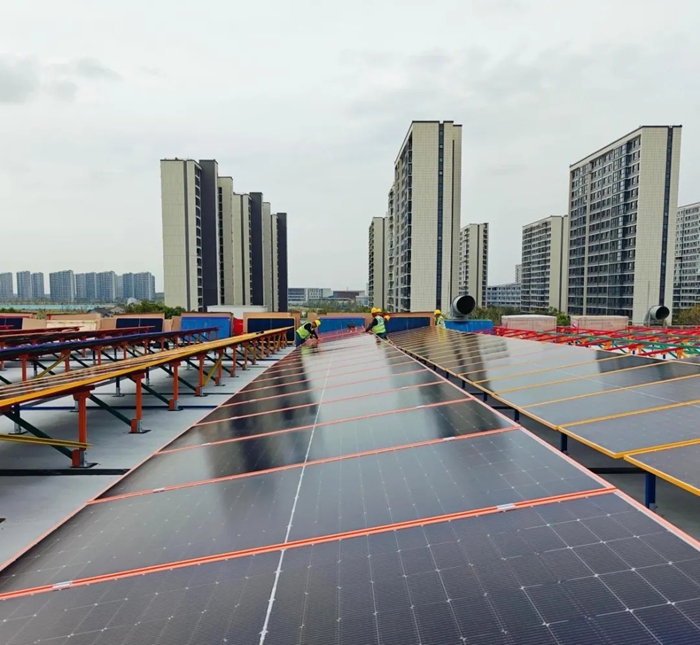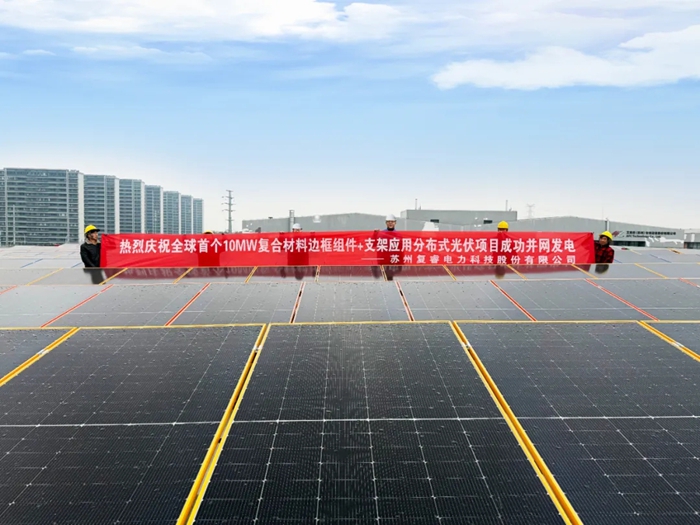The world's first integrated photovoltaic power station made of polyurethane composite materials has been successfully connected to the grid for power generation
Recently, Suzhou Furui Electric Power Technology Co., LTD., a subsidiary of Jiangyin Furui Technology Co., LTD., announced that its 10-megawatt photovoltaic power station project, which uses self-designed, developed and produced polyurethane composite material frames and brackets, has been officially connected to the grid for power generation. This milestone achievement marks the birth of the world's first integrated photovoltaic power station project using such composite materials, opening up a brand-new field for the application and system integration of polyurethane composite materials in the photovoltaic industry.

When interviewed by the China Chemical Industry News, Guan Yuxiang, the chairman of Furui Technology, elaborated on the innovative features and outstanding advantages of the project in detail. This project innovatively integrates polyurethane composite material photovoltaic brackets, frames and photovoltaic modules and other components closely, creating an integrated structure. Compared with traditional metal frames and brackets, the advantages of polyurethane composite materials are extremely significant. Its outstanding corrosion resistance can ensure the long-term stable operation of photovoltaic power stations in harsh natural environments, significantly extending the service life of the power stations and effectively reducing maintenance costs at the same time. The lightweight feature brings numerous benefits: it simplifies the transportation and installation processes, reduces logistics costs and construction difficulty; It has reduced the requirements for the structural strength of photovoltaic support structures, further saving material and construction costs. In addition, this material features high strength and excellent insulation performance, ensuring the safe and stable operation of the power station under various climatic conditions and maintaining the continuity and efficiency of the power generation process. It is worth mentioning that polyurethane composite materials have excellent environmental protection performance, are recyclable and reusable, reduce resource waste and environmental pollution, and help photovoltaic power stations achieve green, low-carbon and sustainable development throughout their life cycle.
The traditional supporting materials for photovoltaic power generation systems are mainly steel and aluminum. The underlying database of power generation project design software lacks relevant data on composite materials, which has prevented polyurethane composite material brackets from coming into the view of many photovoltaic project designs. Guan Yuxiang stated that the successful implementation of this project is expected to become a benchmark for the integrated application of composite material photovoltaic frames and brackets in the photovoltaic industry.

According to Guan Yuxiang, this project has selected high-quality photovoltaic modules such as SUNOVA SOLAR, which have been perfectly integrated with the polyurethane composite material frames and brackets independently developed by Furui Technology. Through meticulous optimization of system integration, the power generation efficiency and overall performance of the power station have been significantly enhanced, laying a solid foundation for the production of efficient clean energy and strengthening the market competitiveness and demonstration effect of the project. The technological achievements and experience accumulated by Furui Technology in this project will provide references for subsequent photovoltaic projects in terms of material selection, system integration, etc., and promote the photovoltaic industry to move towards reducing costs, improving efficiency, and enhancing environmental protection performance. Meanwhile, this project will also attract more participants in the photovoltaic industry to pay attention to and explore the application of polyurethane composite materials, promote the collaborative innovation and development of the upstream and downstream of the industrial chain, and inject strong impetus into the global new energy industry.
Journalists have learned that with the vigorous development of the photovoltaic industry, component manufacturers have put forward higher requirements for photovoltaic frames in terms of mechanical properties and functionality. The bending strength of composite material frames is more than six times that of aluminum alloy, and they have many advantages such as light weight, insulation, PID resistance, aging resistance and corrosion resistance. They have already become an important development direction in the industry.
